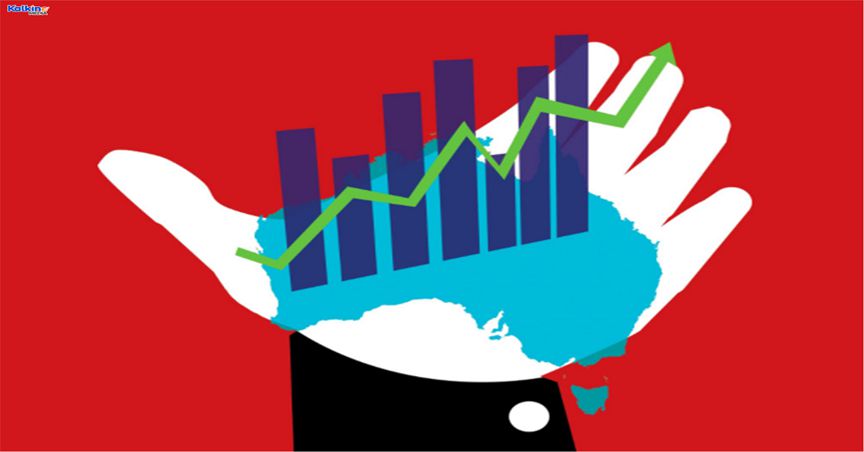Highlights
- The World Bank has recently downgraded the global economic outlook and warned of a potential return of "stagflation".
- The OECD believes that the present economy is better equipped to handle pressures.
- Australia’s economic growth has been impressive, with the labour market providing much-needed stability.
The World Bank recently gave a jarring warning that stagflation risks are bogging down the global economic growth as the Russia-Ukraine war lingers on. With inflation remaining at elevated levels across most countries, the World Bank’s warning has emerged as the nail in the coffin for global economic growth.
The international financial institution has also flagged concerns for the less developed countries in Europe and East Asia, which have a higher risk of facing a major recession. With high inflation and a slow uptick in the supply of goods, many countries could be in a state of deep peril.
The above-average inflation levels have clouded the economic outlook for the global economy in 2022. The bank expects the global economy to expand by 2.9% this year, lower than its previously forecasted value of 4.1%.
As the war in Ukraine sees no end in sight, supply disruptions and inflationary pressures could be the harsh reality for many more months to come. Thus, it could take many more years before these painfully high price levels return to their averages.
World Bank’s expectations around stagflation
As per the World Bank, the sharp downgrade for the global economy is based on the possible return of stagflation like the one seen in the 1970s. Stagflation is the economic term used to describe a period of high inflation and stagnated economic growth. Such an economic event has not been seen in over four decades, making these expectations especially significant.
Interestingly, most central banks across the globe are in the middle of their monetary policy tightening cycles. The Reserve Bank of Australia (RBA) is no different, as it has also conducted its second interest rate hike in June, taking the official cash rate to 0.85%.
Rate rises and Stagflation risks
Rapid interest rate hikes have followed the supply-side disruptions seen across the globe. Additionally, lockdowns in China have become a grave concern amid other rising geopolitical tensions. These factors have arrived together, creating a chaotic scenario for the global economy. Even the growth rate for the next year is expected to be affected, with the bank anticipating an economic growth of 1.5%.
This projection represents an alarming situation, which requires nations to be prepared in advance. Concerns loom that Australia could also be affected by a slowdown in the global economy due to its complex network of international trade channels.
ALSO READ: Australia's energy woes deliver inflationary shock to RBA
OECD says there is nothing much to worry about
The Organisation for Economic Cooperation and Development (OECD) stated that the jolt to the economy is not as severe as expected. The OECD has cut its forecast for global growth from 4.5% to 3% this year, which is slightly higher than the World Bank’s forecast.
The relatively buoyant outlook by the OECD is based on the belief that the modern economy is well equipped to not land into a scenario last seen in the 1970s. Most economies with healthy growth are less dependent on an accommodative monetary policy stance. However, emerging markets would need swift policy action to help anchor inflationary expectations.

Additionally, the OECD believes that protecting low-income households should be the priority of policymakers. The organisation believes that actions such as removal of export restrictions, smoother transportation of commodities out of Ukraine and direct aid to affected nations can help solve the crisis.
However, the onus of initiating these reforms falls on the governments of these nations. A collaborative effort will be required to revive international trade across all countries.
ALSO READ: What another 50bps hike in interest rate means for mortgage holders?
What does it mean for Australia?
Inflationary pressures in Australia have remained relatively low compared to many other advanced economies. A range of factors has helped maintain stability in the economy even during the toughest days.
The RBA has time and again highlighted that a strong labour market and continued economic growth have been the pillars of strength for Australia. The country’s unemployment rate also stands at a record low level, paving the way for higher wages. Though the current wage growth rate is dismal, the RBA expects wages to pick up pace as the labour market tightens further.
Amid concerns of stagflation, Australia remains in a relatively better state. Global risks prevail for the country, much like many other advanced nations. However, Australia seems well-positioned to face the harsh economic conditions with the help of its decent economic growth.
With correct policy action, the government can help low-income groups wade through upcoming challenges in the economy. However, those barely managing a living could be left to fend for themselves till such policies begin to show their impact.
ALSO READ: Half a million Aussie motorists to get AU$750 cash rebate amid rising toll



